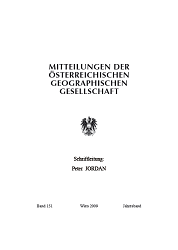
Mitteilungen der Österreichischen Geographischen Gesellschaft Band 151/2009, pp. 9-32, 2012/03/29
151. Jg. (Jahresband), Wien 2009
Die Transformation der Staaten der EU-27 von Auswanderungs- in Einwanderungsstaaten scheint tatsächlich einer gewissen Regelhaftigkeit zu folgen. Hatte es Anfang der 1950er Jahre noch deutliche Unterschiede in Europa gegeben und waren damals manche Staaten durch Abwanderung und andere wiederum durch Zuwanderung gekennzeichnet, so gleichen sich die Situationen mehr und mehr an. Eine wachsende Wirtschaft benötigt trotz der erzielbaren Produktivitätsfortschritte ein Mehr an Arbeitskräften, welches nur durch eine höhere Erwerbsbeteiligung der erwerbsfähigen Bevölkerung und durch Zuwanderung gedeckt werden kann. Diese Entwicklung betraf zuerst die mittel- und westeuropäischen Staaten, betrifft nun auch die südeuropäischen Staaten und wird in absehbarer Zukunft wohl auch das östliche Europa betreffen. Der vorliegende Beitrag analysiert diese empirische Entwicklung und entwirft dafür auch ein eigenes konzeptionelles Erklärungsmodell, welches den allgemeinen Rahmen gängiger Migrationstheorien (Push- und Pull-Modell, Weltsystemansatz oder Migration System Theory) verlässt und die Besonderheiten der europäischen Migration berücksichtigt.
...
Of young and old immigration countries: The geography of European migration
The transformation of the EU-27 member states from emigration to immigration countries actually seems to follow a general pattern. In the beginning of the 1950s, there were clear differences in Europe since some states were characterised by emigration, others by immigration. Today the different situations assimilate gradually. Despite achievable advancing productivity, a growing economy is in need of more labour force which can only be met by an increased labour participation of the working population and by immigration. This development began in the Central and Western European countries, then took place in the Southern European countries and in the near future probably in Eastern Europe as well. This article analyses this empirical process and develops a new conceptual explanatory model leaving behind the established migration theories (push and pull model, world system approach or the migration system theory) and taking into account the specifics of European migration.